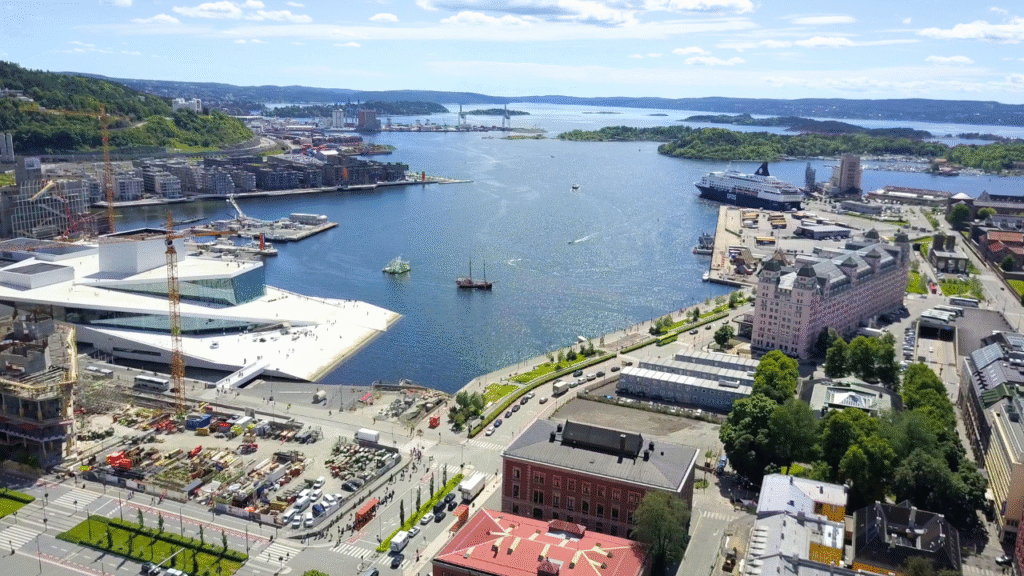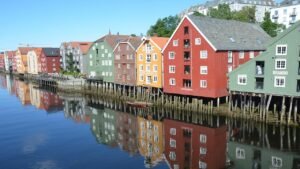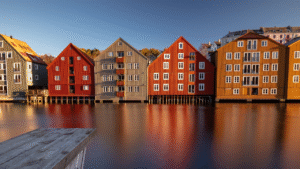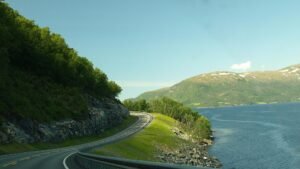Estimated reading time: 11 minutes
Key Takeaways
- Oslo offers a rich blend of cultural attractions, including the modern Munch Museum and the iconic Oslo Opera House
- The Vigeland Sculpture Park features over 200 sculptures in an expansive outdoor setting
- Visit the Holmenkollen Ski Jump for panoramic views and insights into Norway’s winter sports heritage
- Take a day trip to Drøbak, a charming coastal town just an hour from Oslo
- The Oslo Pass provides free public transportation and entry to many attractions
Table of Contents
- Introduction
- Spotlight on Oslo’s Top Attractions
- Day Trip Option: Drøbak, Norway
- Practical Tips and Itinerary Suggestions
- Conclusion
Introduction
Oslo, the vibrant capital of Norway, welcomes visitors with a perfect blend of historical richness, artistic treasures, and natural beauty. If you’re wondering what to do in Oslo, this city offers a blend of culture, innovation, and stunning landscapes that make it an ideal destination for travelers seeking both urban experiences and natural wonders. From world-class art museums to remarkable architectural marvels, peaceful parks, and scenic day trips, Oslo presents a diverse array of attractions that showcase the best of Norwegian heritage and innovation.
The city sits nestled at the head of the Oslo Fjord, creating a unique setting where urban life meets natural splendor. Its compact size makes it easy to explore many key attractions on foot or using the efficient public transportation system. Whether you’re an art enthusiast, history buff, outdoor adventurer, or culinary explorer, Oslo has something special waiting for you.
Want to see this for yourself? Click here to jump to this part of the video.
Spotlight on Oslo’s Top Attractions
Oslo Munch Museum Guide: Exploring Edvard Munch’s Legacy
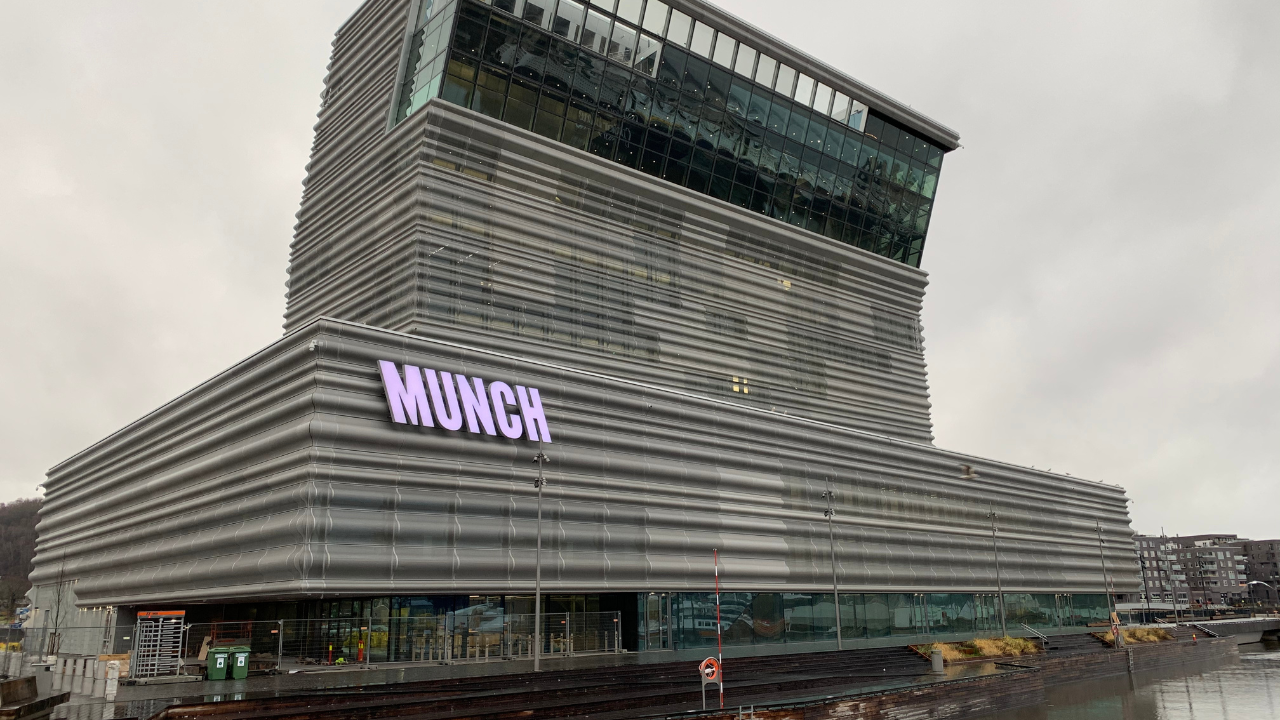
By Premeditated – Own work, CC BY-SA 4.0, Link
The Munch Museum stands as one of Oslo’s most significant cultural landmarks. Reopened in October 2021 in a striking new building, this museum houses the world’s largest collection of works by Norway’s most famous painter, Edvard Munch. Art lovers can view multiple versions of his iconic masterpiece, The Scream, along with thousands of paintings, prints, photographs, and personal effects spanning his prolific career. [SOURCE]
For the best Oslo Munch Museum guide experience, plan to spend at least two hours exploring the rotating exhibitions and multimedia displays. The museum’s design itself is worth admiring, with its striking harborside location next to the Opera House. Visit during early mornings or late afternoons to avoid crowds, and consider joining a guided tour for deeper insights into Munch’s emotional and thematic artistic journey. The museum also features a café with panoramic views of the Oslo Fjord, making it a perfect spot to reflect on the powerful artwork you’ve just experienced.
Oslo Opera House Roof View: A Modern Architectural Marvel
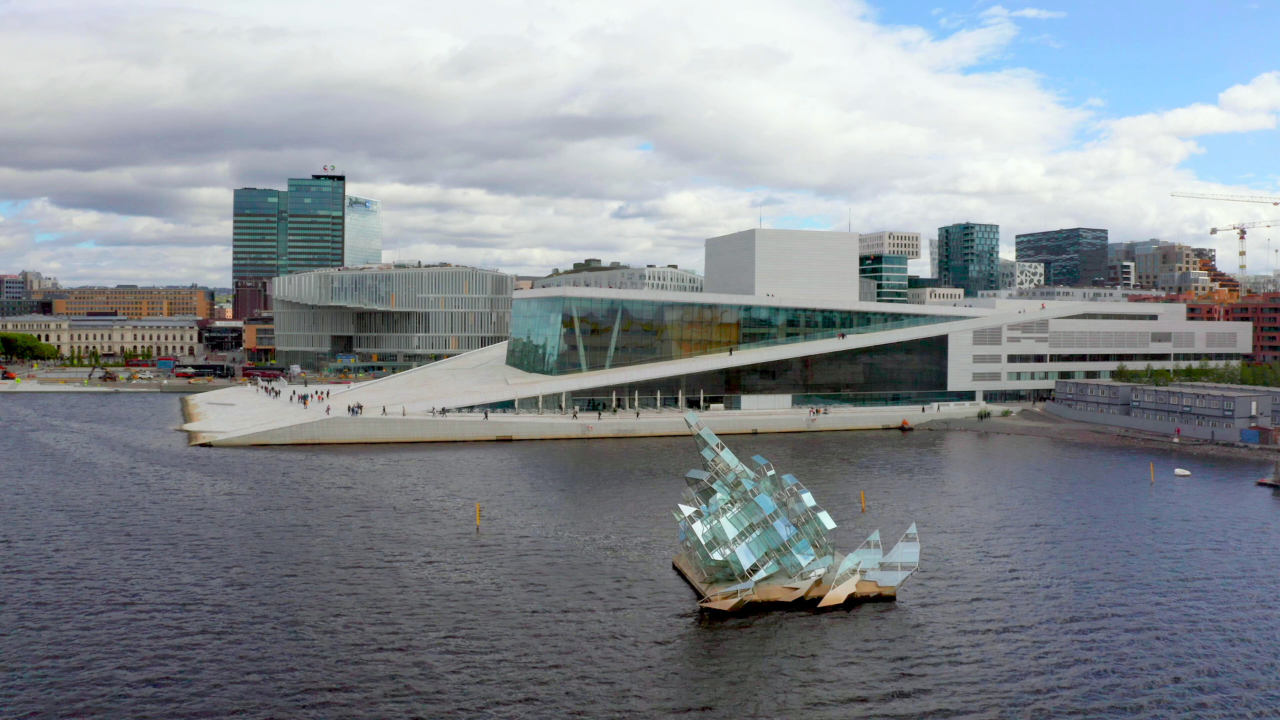
The Oslo Opera House (Operahuset) represents one of the city’s most distinctive modern landmarks. This stunning building appears to rise directly from the waters of the Oslo Fjord, with its striking white marble exterior sloping at an angle that allows visitors to walk from ground level right up to the roof. The design pays homage to Norway’s mountainous landscape and creates one of the most unique public spaces in Norway’s best cities. [SOURCE]
The Oslo Opera House roof view offers an unmatched panorama of the city, harbor, and surrounding hills. For the most magical experience, time your visit for sunset when the changing light bathes the cityscape in golden hues. The roof is freely accessible to the public at all hours, making it both a popular tourist attraction and a beloved spot for locals. Inside, the building houses the Norwegian National Opera and Ballet, and guided tours are available for those interested in the architectural details or a peek behind the scenes of this world-class performance venue.
Vigeland Sculpture Park Oslo: An Open-Air Museum
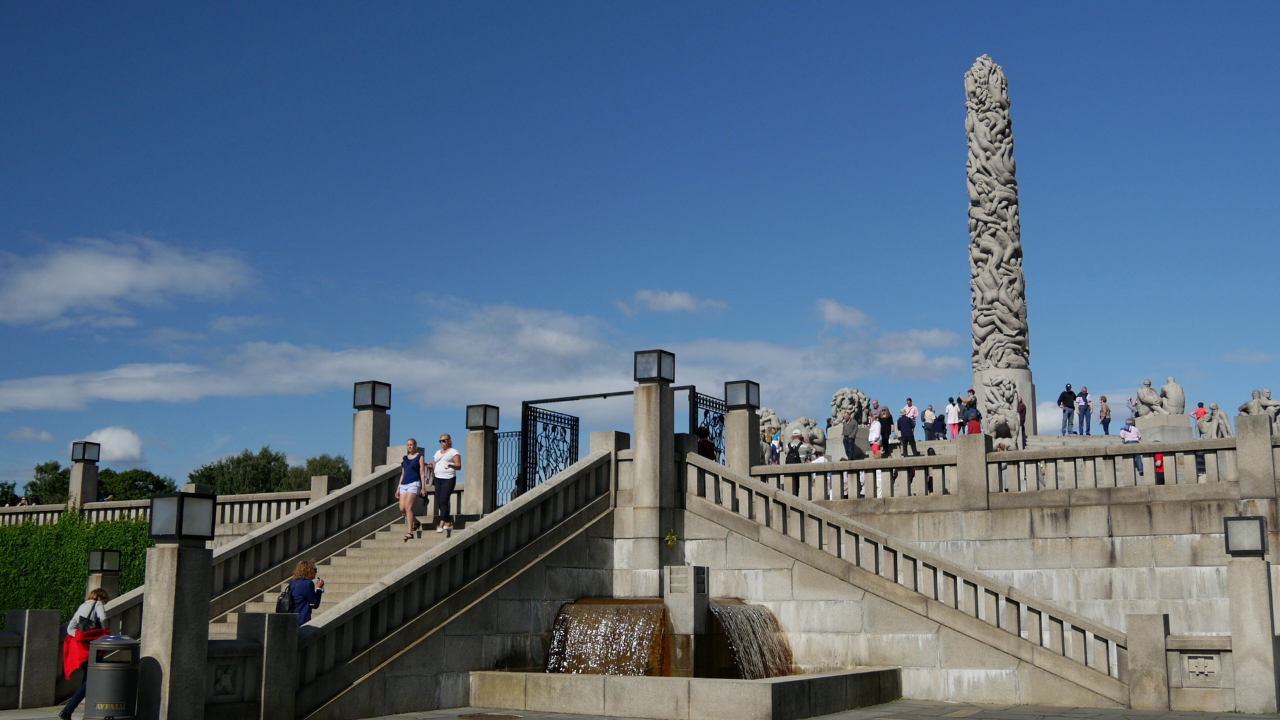
The Vigeland Sculpture Park Oslo (Vigelandsparken) stands as the world’s largest sculpture park created by a single artist. This expansive green space features more than 200 sculptures in bronze, granite, and wrought iron by Gustav Vigeland, Norway’s most celebrated sculptor. Set within the larger Frogner Park, this open-air museum explores universal human themes such as life, death, relationships, and the human condition. [SOURCE]
The park’s central axis leads visitors past many notable works, including the famous Angry Boy (Sinnataggen), the Wheel of Life, and culminates at the impressive Monolith. This 14-meter high sculpture carved from a single piece of granite depicts 121 intertwined human figures reaching toward the sky. The park is free to enter and open year-round, making it one of the most accessible cultural attractions in Oslo. Spring and summer visits offer the added bonus of blooming flowers and green lawns, providing a beautiful backdrop for these powerful artistic expressions.
Holmenkollen Ski Jump Visit: Winter Sports Heritage
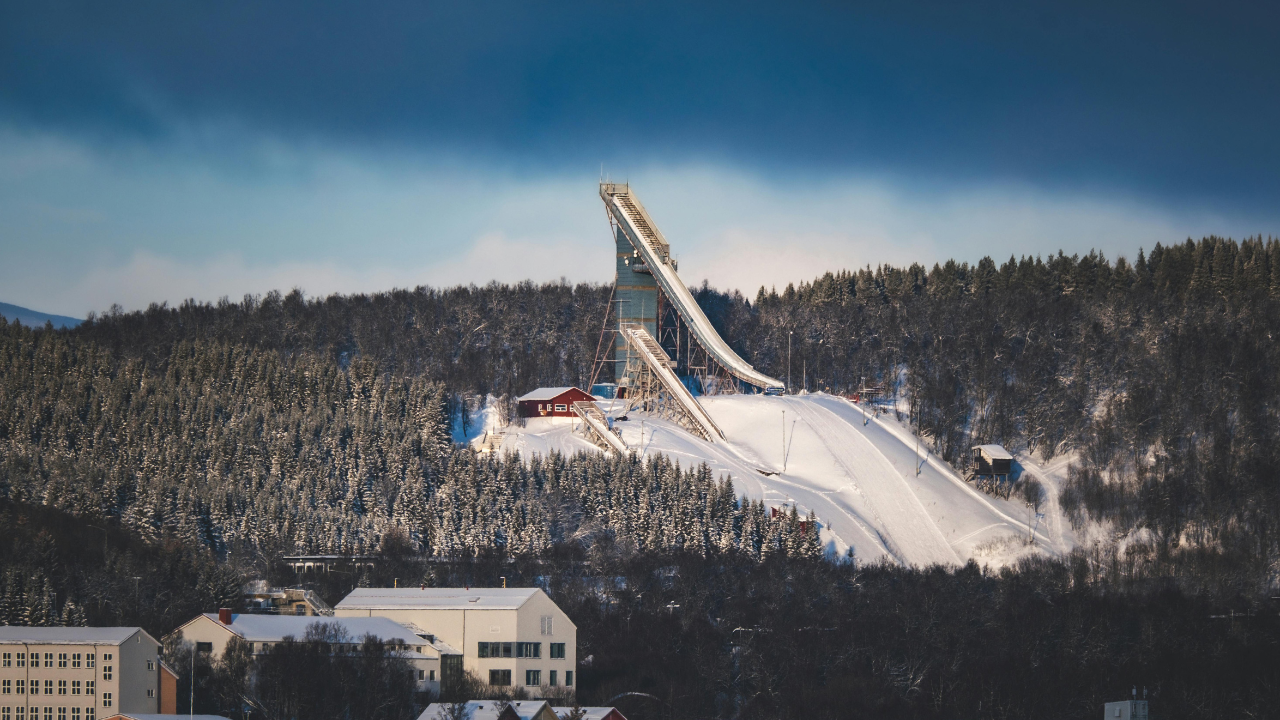
A Holmenkollen ski jump visit takes you to one of Norway’s most iconic sporting venues and a symbol of the country’s deep connection to winter sports. Perched high above the city, this impressive structure has been a centerpiece for ski jumping competitions for over a century, including hosting events during the 1952 Winter Olympics. The current modern design, completed in 2010, offers a striking silhouette against the sky. [SOURCE]
Beyond the jump itself, visitors can explore the Ski Museum housed beneath the structure, which chronicles over 4,000 years of skiing history. The observation deck at the top provides breathtaking panoramic views of Oslo, the surrounding forests, and the fjord beyond. For the truly adventurous, summer months offer the opportunity to try the zipline from the top of the jump tower, giving you a taste of what ski jumpers experience during their descent. The site is easily accessible via public transportation from central Oslo, making it a convenient half-day excursion when planning what to do in Norway.
Day Trip Option: Drøbak, Norway
Just an hour’s drive south of Oslo lies the picturesque coastal town of Drøbak, a perfect day trip destination for those looking to experience small-town Norwegian charm. This Drøbak Norway day trip from Oslo offers a peaceful escape from the city, with its well-preserved wooden houses, narrow streets, and beautiful waterfront setting along the narrowest point of the Oslo Fjord. [SOURCE]
One of the most notable attractions in Drøbak is Oscarsborg Fortress, which played a crucial role in Norway’s defense during World War II. Built on two small islands in the middle of the fjord, this historic fortress can be reached by a short ferry ride from Drøbak’s harbor. Visitors can tour the grounds, explore the museums, and enjoy the scenic views back toward the mainland.
Drøbak is also known as the home of the Norwegian Santa Claus (Julenissen). The town houses a year-round Christmas shop called Julehuset, where visitors can experience the magic of the holiday season regardless of when they visit. The town’s charming streets are lined with art galleries, boutiques, and cozy cafés, making it perfect for a leisurely stroll.
During summer months, the waterfront comes alive with locals and visitors enjoying seafood restaurants, swimming spots, and boat tours. The clear waters of the fjord and the fresh sea air create a refreshing atmosphere, especially when planning your visit during the best time to visit Norway. For nature lovers, the surrounding area offers walking trails with beautiful views of the fjord and countryside.
Top Picked Activities in Oslo
Practical Tips and Itinerary Suggestions
Time Allocation: Making the Most of Your Oslo Visit
When planning what to do in Oslo, time allocation is key to experiencing the city’s highlights without feeling rushed. A well-paced itinerary can help you make the most of your stay while allowing time to absorb the unique atmosphere of each attraction. [SOURCE]
For a one-day visit, focus on the central attractions:
- Morning: Begin at the Oslo Opera House, walking on its roof for early views of the city, then visit the adjacent Munch Museum (allow 2-3 hours for both)
- Afternoon: Take public transport to Vigeland Sculpture Park, allowing 1-2 hours to wander through the sculptures
- Evening: Return to the harbor area for dinner at Aker Brygge, with its waterfront restaurants and sunset views
For a two-day stay, add these experiences:
- Day 2 Morning: Visit Holmenkollen Ski Jump and its museum (2-3 hours including travel time)
- Day 2 Afternoon: Take a day trip to Drøbak (4-5 hours) or explore additional museums like the Viking Ship Museum or the National Gallery
Regarding the best times to visit attractions:
- The Munch Museum and Opera House are less crowded on weekday mornings
- Vigeland Park is most magical in the early evening light during summer, when the park stays bright until late
- Holmenkollen offers clearer views on bright mornings, before any afternoon haze develops
- Drøbak is livelier on weekends but more peaceful for exploration on weekdays
Transport Options: Navigating Oslo with Ease
Oslo boasts an efficient, integrated public transportation system that makes exploring the city and its surroundings straightforward even for first-time visitors. Understanding your options can help you navigate the city while managing your Norway travel budget effectively. [SOURCE]
The Oslo Pass is highly recommended for tourists. This card provides:
- Free travel on all public transport (buses, trams, subway, ferries)
- Free entry to most museums and attractions
- Discounts on various tours, restaurants, and other services
- Available in 24-hour, 48-hour, and 72-hour versions
For getting around, Oslo offers several convenient options:
- Metro (T-bane): Five lines covering most of the city, including a direct line to Holmenkollen
- Trams: Efficient for traveling between central neighborhoods
- Buses: Extensive network reaching areas not covered by rail
- Ferries: Connecting the harbor to nearby islands in the Oslo Fjord
- City bikes: Available for rent through a mobile app during the warmer months
Most major attractions in central Oslo are within walking distance of each other, making foot travel a pleasant option during good weather. For reaching Drøbak, regular buses depart from Oslo Central Station, with the journey taking approximately one hour each way. Understanding Norway’s transportation options will help you navigate not just Oslo but the entire country.
Insider Tips: Local Insights for an Authentic Experience
To experience Oslo like a local and make the most of your visit, consider these insider tips that go beyond the standard tourist advice. [SOURCE]
Dining recommendations:
- Mathallen Food Hall in the Grünerløkka district offers a diverse range of Norwegian and international cuisine under one roof, perfect for sampling local specialties
- For traditional Norwegian fare, try Kaffistova in central Oslo, serving classics like meatballs and salmon dishes at reasonable prices
- The waterfront restaurants at Aker Brygge provide scenic dining, though prices tend to be higher due to the location
- For budget-friendly options, look for the daily lunch specials (dagens) offered by many restaurants
Accommodation suggestions:
- Stay in central neighborhoods like Grünerløkka or Frogner for easy access to attractions and local atmosphere
- Consider aparthotels or vacation rentals for longer stays, which often provide better value and kitchen facilities to offset Norway’s high food costs
- Budget travelers should look into Anker Hostel or similar accommodations that offer clean, basic rooms at lower rates
- Book accommodations well in advance if visiting during summer peak season (June-August) or during major festivals
Lesser-known attractions worth visiting:
- The Akerselva River Walk follows a picturesque waterway through the city, passing historic factory buildings, small waterfalls, and trendy cafés
- Bygdøy Peninsula houses several excellent museums, including the Viking Ship Museum and Folk Museum, and offers pleasant beaches and walking paths
- The Botanical Garden provides a peaceful retreat with thousands of plant species and free entry
- Akershus Fortress, overlooking the harbor, combines historical significance with beautiful views
Conclusion
Oslo presents visitors with a remarkable mix of cultural richness and natural beauty, making it a standout destination among Norway’s best travel destinations. From the artistic treasures of the Munch Museum to the architectural wonder of the Oslo Opera House, from the thought-provoking sculptures at Vigeland Park to the sporting heritage at Holmenkollen, the city offers diverse experiences that appeal to all interests.
The ease of taking a day trip to charming Drøbak adds another dimension to your Oslo adventure, allowing you to experience the coastal character that defines much of Norway’s identity. With efficient public transportation, walkable neighborhoods, and the convenience of the Oslo Pass, exploring this compact capital is straightforward and enjoyable.
Whether you’re drawn to museums and galleries, architectural landmarks, outdoor spaces, or simply the distinctive atmosphere of Scandinavian urban life, Oslo rewards visitors with authentic experiences and lasting memories. As you plan what to do in Oslo, remember that the city’s blend of history, innovation, and natural beauty creates a destination that feels both thoroughly modern and deeply connected to its cultural roots.
For more inspiration on Norwegian travel, including spectacular 4K travel documentaries featuring Oslo and beyond, visit Pathfinders Travel on YouTube. Their Wonders of the World series showcases Norway’s breathtaking landscapes and vibrant cities in stunning detail, helping you plan your perfect Norwegian adventure.

